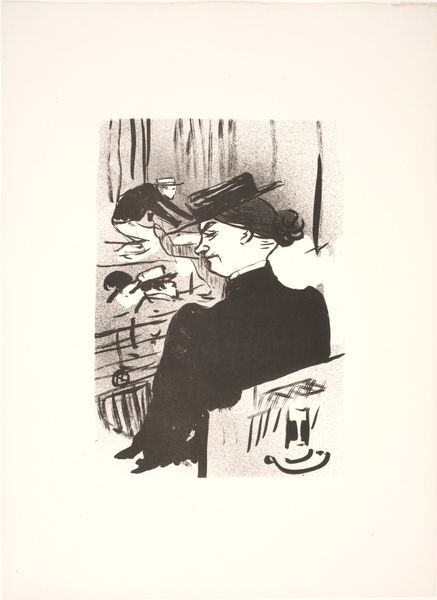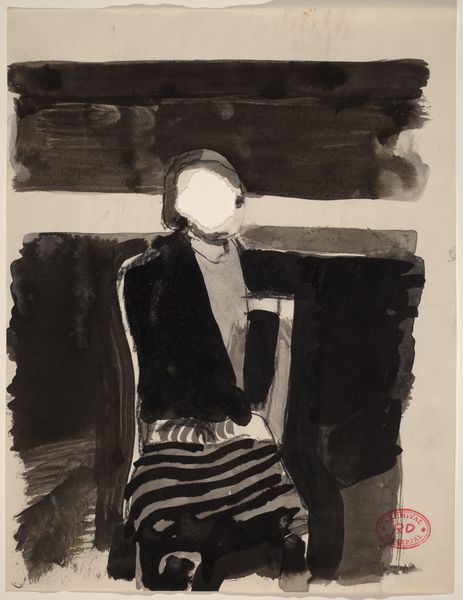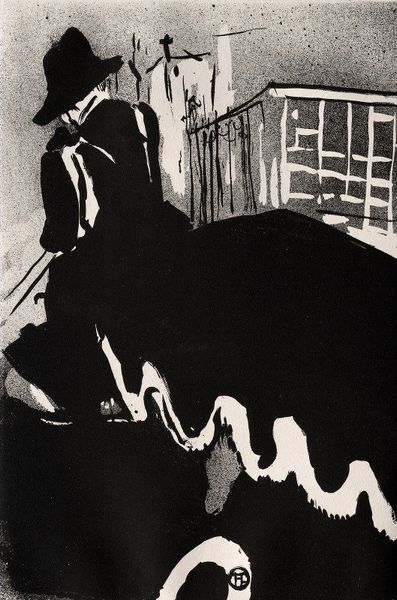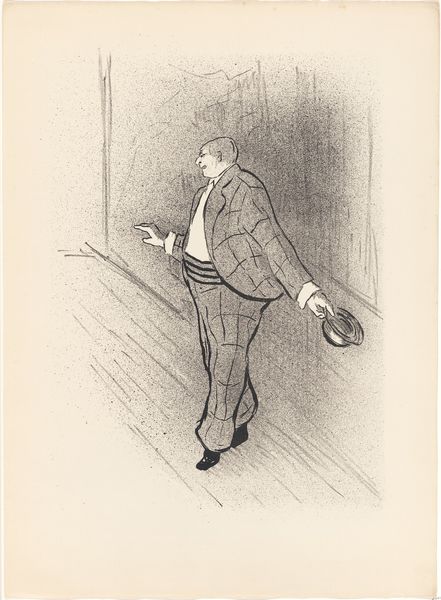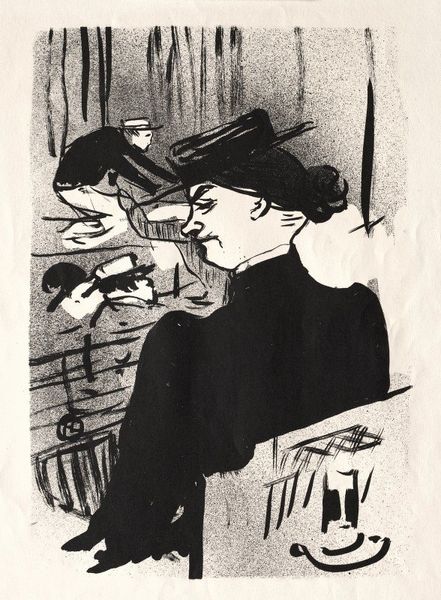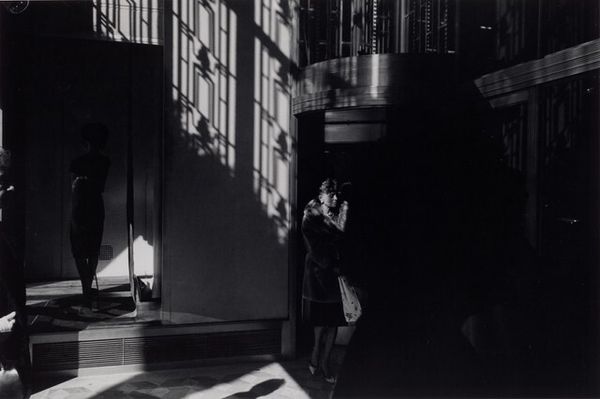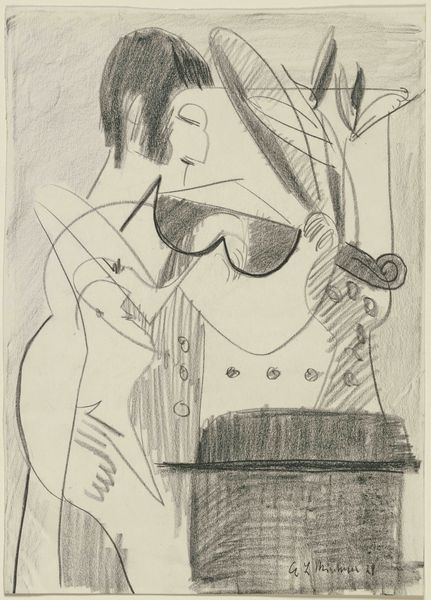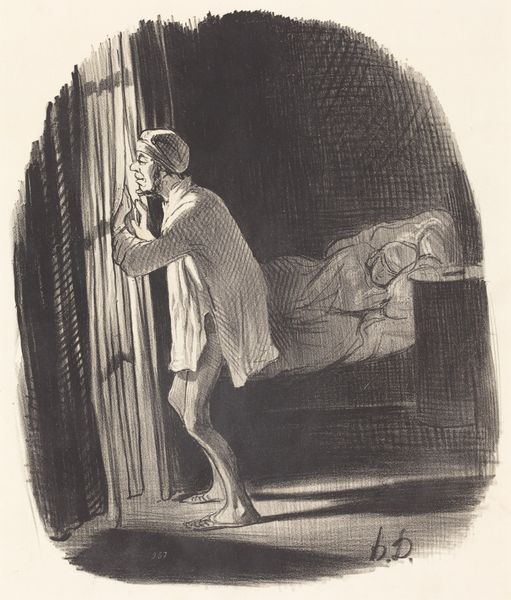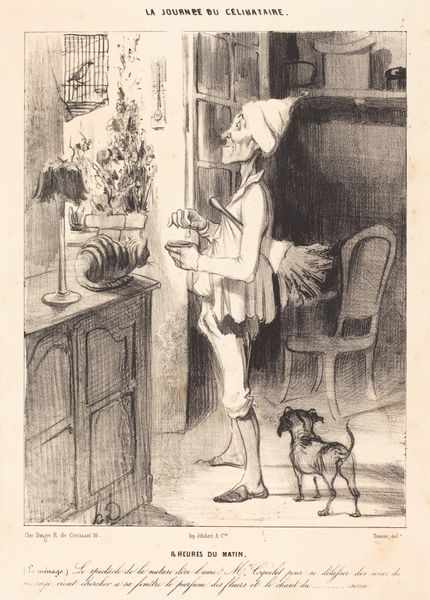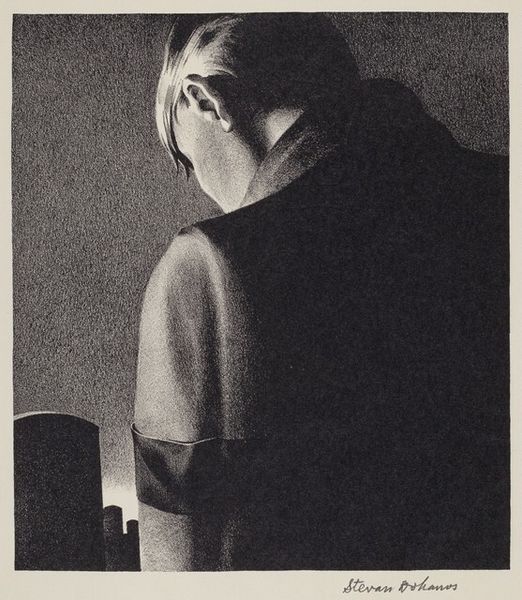
Dimensions: image: 584 x 381 mm
Copyright: © The estate of Richard Hamilton | CC-BY-NC-ND 4.0 DEED, Photo: Tate
Editor: So, this is Richard Hamilton's "A Dedicated Follower of Fashion." There's no listed date. It's monochrome, a man on the phone. What I find interesting is the staged, almost theatrical quality of the scene. How do you interpret this work? Curator: The telephone, the carefully placed chair, the abstracted artwork on the wall – they all serve as symbols of a particular cultural moment, don't they? It speaks to the rise of consumerism and image consciousness. The man, disconnected yet connected through technology. Does this disconnection resonate with you? Editor: I think so, yes. It's interesting how the setting reflects the figure's internal state. Curator: Exactly. Hamilton uses these visual cues to explore the psychological weight of modern life. Perhaps that's why it continues to resonate today. Editor: I see. It makes you think about how technology shapes our identity and values. Curator: Precisely. A powerful commentary.
Comments
tate 6 months ago
⋮
http://www.tate.org.uk/art/artworks/hamilton-a-dedicated-follower-of-fashion-p07448
Join the conversation
Join millions of artists and users on Artera today and experience the ultimate creative platform.
tate 6 months ago
⋮
A dedicated follower of fashion is an image combining photographic and drawn elements in a seamless whole. It shows a young man wearing a suit, standing in a hallway and talking on the phone. The white telephone sits on a small round table behind a chair with a curved back. Above the chair and table a picture showing the stylised letters of the word ‘ART’ hangs on the wall. This is a black and white representation of an image created by American Pop artist Robert Indiana (born 1928) in the early 1970s. The young man’s suit is double-breasted, reminiscent of the suits worn by the Beatles in some of their earliest stage performances during the 1960s. Hamilton developed his print from a photograph taken in the late 1960s. He recounted:
